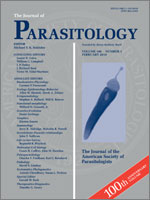Malaria has been one of the most important diseases of humans throughout history and continues to be a major public health concern. The 5 species of Plasmodium that cause the disease in humans are part of the order Haemosporida, a diverse group of parasites that all have heteroxenous life cycles, alternating between a vertebrate host and a free-flying, blood-feeding dipteran vector. Traditionally, the identification and taxonomy of these parasites relied heavily on life-history characteristics, basic morphological features, and the host species infected. However, molecular approaches to resolving the phylogeny of the group have sometimes challenged many of these traditional hypotheses. One of the greatest debates has concerned the origin of the most virulent of the human-infecting parasites, Plasmodium falciparum, with early results suggesting a close relationship with an avian parasite. Subsequent phylogenetic studies placed it firmly within the mammalian clade instead, but the avian origin hypothesis has been revived with recent genome-based analyses. The rooting of the tree of Haemosporida has also been inconsistent, and the various topologies that result certainly affect our interpretation of the history of the group. There is clearly a pressing need to obtain a much more complete degree of taxon sampling of haemosporidians, as well as a greater number of characters before confidence can be placed in any hypothesis regarding the evolutionary history of the order. There are numerous challenges moving forward, particularly for generating complete genome sequences of avian and saurian parasites.
How to translate text using browser tools
1 February 2014
Malaria's Many Mates: Past, Present, and Future of the Systematics of the Order Haemosporida
Susan L Perkins
ACCESS THE FULL ARTICLE

Journal of Parasitology
Vol. 100 • No. 1
February 2014
Vol. 100 • No. 1
February 2014




